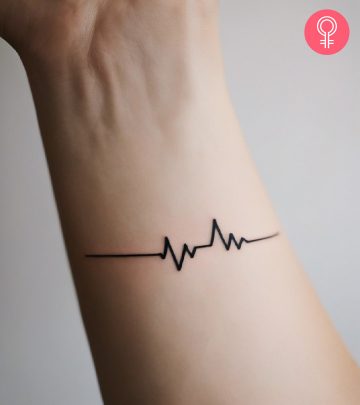What Is A Normal Blood Pressure Reading

Image: Shutterstock
Have you ever wondered what those blood pressure numbers at the doc’s office even mean? Blood Pressure, we’ve heard the word thrown around every time we visit the doctor’s office or more often when you’re trying to break bad news to your parents. Like when you decided you wanted to quit college and follow your boyfriend in a folk band around the country on tour as his groupie or when you crashed your car (in this case the blood pressure goes up for both the parties). And they look at you dumbfounded with their faces turning an unruly shade of red and then all hell breaks loose while your dad just goes on a ranting spree and your mother accuses you of raising her blood pressure levels. So yeah, we’ve heard the three-syllable word quite often in our lives, but how well do we actually understand the concept of blood pressure, and what leads to a fluctuation in it?
Every time the doc ties the blood pressure contraption around your arm, gives it a good squeeze, and notes down the numbers, you find yourself stuck in a quandary, pondering what he just scribbled down in his notepad. So let us break it down one step at a time.
Let’s Understand Blood Pressure
When a doctor scribbles down your blood pressure, the top number is the systolic pressure and the bottom number is the diastolic pressure. The rhythmic beating of your heart in a systematic fashion of systolic and diastolic occurs when the heart pushes out the blood and pumps it to the rest of the body through the arteries. This creates pressure on the blood vessels. This pressure is called the systolic blood pressure (1).On the other hand, the diastolic blood pressure is the pressure in the arteries when the heart takes a back seat and rests for a while between the beats. During this ‘rest’ period, the heart gets filled with blood and gets oxygen (2). If you’re under the impression that a strong force of blood pushing against blood vessels is necessarily a good thing, then quickly get disabused of that misguided notion. The conception of strong when aligned with blood pressure is not a healthy concept.
How To Determine A Normal Blood Pressure?
Let’s picture our body to be a garden. Now, the blood vessel plays the role of a green hose. And the blood is the water here. So, when you intend to water your plants in the garden, you turn on the hose and water it gently. The water gushes out at a reasonable pressure to keep the plants from breaking. That’s exactly what normal blood pressure looks like. When the water pressure let through the hose is increased, the plants are at the receiving end of the destruction because of high pressure. Similarly, this is what happens when an increased force physically pounds the organs in the body.
So, moral of the story? Gentle is good, strong is bad. We’ve established that, haven’t we? If the ebb and flow of blood against your blood vessels is gentle then congratulations, your blood pressure levels are quite normal.
What Are The Kinds Of Blood Pressure?
If you’ve noticed, the good doc often notes down two numbers on his notepad (one over the other).
On an elemental level, blood pressure is broadly classified into normal, elevated, stage 1 hypertension, and stage 2 hypertension (3). The American College of Cardiology and the American Heart Association considers blood pressure numbers in the vicinity of 120/80 or less, as normal. So if your numbers range between 120-129 over 80 then you’re in the safe zone (4).
However, if it supersedes 130, then you need to put yourself on high alert and focus on maintaining your health (5). Else it could trigger a plethora of diseases. An elevated reading means you have high blood pressure or hypertension—a chronic medical condition where the blood pressure is often elevated (6). This gives you cause to worry.
If you find yourself in the danger zone, then you are a prime candidate for a lot of health issues that plague a high blood pressure patient. It can damage the arteries and also increase the risk of stroke, dementia, heart attacks and other cardiovascular and kidney diseases.
Normalise Your Pressure
High blood pressure cannot be taken lightly. So you need to stay at the top of your game with a few lifestyle changes so you don’t end up with diseases. Exercising, watching your diet, abstaining from salt can all help diminish the elevated status of your blood pressure (7).
While high blood pressure is an insidious blight upon our lives, low blood pressure that occurs when blood pressure takes a dive is a minor infraction that can be dealt with swiftly and efficiently. Just keep yourself sufficiently hydrated (8). By drinking water, you can keep the fatigue that’s quick to follow low blood pressure at bay.
So now you have all the basics, right? Stay vigilant the next time you’re at your doctor’s and pay heed to those numbers. It can save your life.



























